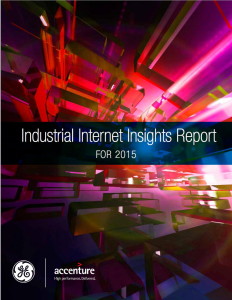Colin Angle, CEO, iRobot:
- smart home: people have hard time learning how to use current generation of smart home devices. Unacceptable delay in activation. we need “just live your life, and the house does the right thing.” Shouldn’t have to pull out phone. Will be aware of your location, act naturally.
- “Need metaphor of the room to exist” — and robot will do that. Cool: Future iRobot could do that while doing its own job. New generation of iRobot has mapped 1/2 billion sq. feet in less than a year.
- Would be a lot cooler if you can just buy a smart bulb, screw it in, and it would just work without having to do anything.
- Pogue: how do you deal with the criticism that iRobot LOOKS as if it is cleaning randomly? Angle: Customers just cared that it actually did the job. “Just make it clean better” — I don’t care how long it takes, because I’m not there.
- Next generation of robotics will be manipulation.
- Angle: “if you’re worried about AI taking over, don’t worry about me, worry about the marketing guys. … I just vacuum floors.” This is so funny: “I used to be a self-respecting robot scientist, but it wasn’t until I became a vacuum salesman that I made any money.”
- significant change, affecting both demand and supply. No industry unaffected.
- to remain competitive, countries and companies will have to be at edge of innovation. Faster than ever.
- strategies focused on cost-cutting less effective than emphasis on new products
- World Economic Forum looking at impact of internet on business and society
- 1st report: industrial internet of things & how it would transform industries. Adoption accelerating.
- 3-4 yrs. from now, major structural changes, massively transformative (but you can begin w/ incremental change).
- only 7% of 500 companies surveyed said they had comprehensive IoT strategy.
- illustrations: water distribution network, dramatic time savings in time to install plane seats.
- where’s the value? integrate smart products and back-office systems for IoT and As-a-Service Enabled approach.
- Moving to multi-dimensional definition of a product.
- Companies will become platforms
- Sales models will move to as-a-service
- They have identified 30% “uplift” for generic company. Specific improvements from digitization of the enterprise varies from one industry to another
- Examples:
- a Euro telecoms company: using a Google Glass-style product for field technicians at job sites and to capture data in field. 20-40% productivity gains.
- pay-per-use vehicle services: a French tire company that wants to create 1 b Euro biz in “mobility.” — from selling tires to selling outcomes! Money-back guarantee. 2.5 liters reduction in gas use for 100 km driven — huge reduction in trucking companies.
- connected homes: working with multiple clients to define what the services will be.
- Scope and scale of changes acute.
- Recent survey: 42% of companies have said improvement has been in how they interact with customers.
- Leading companies moving from product push to creating value by:
- focusing on higher value solutions
- focusing on enhanced experience
- focusing on customer outcomes.
- still focus on the what, but also the how!
- dramatic shift to “Total Experience Innovation.”
- Be Solution Centric: all centered on customer
- Build an Insight Platform: continuously renew
- Drive Pivotal Leaders: find right leaders.
- Examples:
- ALS patients: helping them regain control of their lives through wearables, displays, etc. done with Phillips.
- industrial equipment manufacturer: breaking silos. Innovation digital factory: to instill connectivity into the biz, and build outcome-based offers, and increasing level of engagement with customers.
- Future:
- implantable technologies
- wearable internet
- IoT everywhere
- connected home
- driverless cars
- robotics
- sharing economy
Here’s the main event! Prof. Michael Porter, iRobot’s Colin Angle & PTC’s Jim Heppelmann on IoT transformation:
- Porter & Heppelmann’s research collaboration on IoT: he was a PTC board member. “Magical opportunity”
- Porter: both products and internal operations are changing due to IoT
- Porter: still in early stages of industrial conversion
- Porter: IoT is wrong term: real emphasis is change in products and what they can do. Embedding in service companies. Every service business will be affected.
- Heppelmann: the IoT also affects how the customer operates the product.
- Angle: iRobot has jumped into IoT with both feet. Touches every aspect of their biz.
- Heppelmann: missed the human element in this. That led to their AR initiative, so people could relate to the new products in ways that are both physical and digital.
- Angle: iRoomba sending data back in real time on how it’s being used. No more focus groups! Robot part of design team.
- Heppelmann: fundamentally different design process now.
- Porter: who collects, who decides how to use the data? New chief data officer position.
- Angle: who is best to handle the data? Idea of chief data officer interesting. Product ID a new competency.
- Porter: starting to see new organizational structures pop up. Becoming possible to sell almost anything as a service.
- Heppelmann: “devops” — combine development & operations. Chief Data Officer — whose job is it to decide what the data is telling various departments?
- Porter: can’t have handoffs between each group, because you need continuing dialogue.
- Heppelmann: industrial companies can learn from software companies, with techniques such as agile dev in software. Continuous improvement. Also, “customer analytics.”

